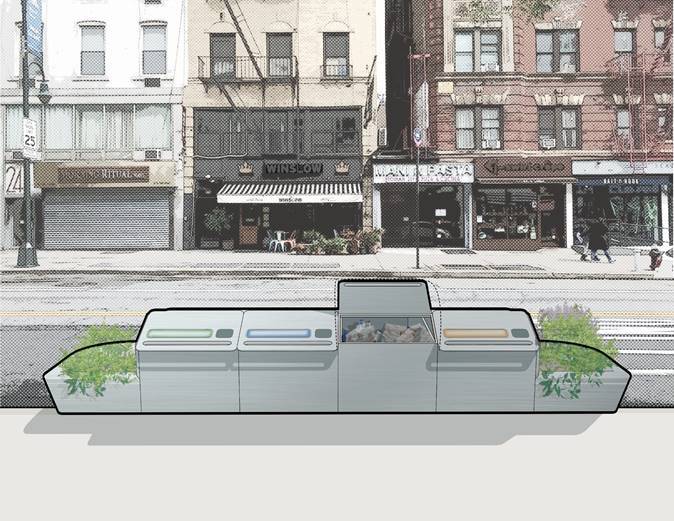EXCLUSIVE: City Takes Major Steps to Get Garbage off the Sidewalk

Bad news for city rats is great news for city residents.
The Department of Sanitation will announce on Thursday two major initiatives to get filthy bags of seeping garbage out of the way of pedestrians and into on-street containers where they belong — the result of a year-long process to stop a decades-old city blight.
The first proposal calls for a new city rule requiring all new 300-plus-unit buildings to set out their garbage in sealed containers instead of piles of bags that delight vermin and repulse the rest of us. Buildings that don’t comply will no longer receive free pickup from the Department of Sanitation.

The rule will also cover any commercial-to-residential conversion with more than 300 units, the agency said.
No less significantly, the Sanitation Department will also announce a partnership with the Department of Transportation on a pilot program called “Clean Curbs” that will allow Business Improvement Districts (and, presumably, other large neighborhood groups) to install sealed containers — containers that would be set out in the street, not on the sidewalk (pictured at the top of this post).
Sanitation Commissioner Kathryn Garcia hailed the new initiatives — probably the best news put out by any agency during the coronavirus fortnight of fear.
“City pedestrians navigate around piles of trash and recycling that take up significant sidewalk space,” Garcia said. “It is time to make smarter, more efficient choices when it comes to the way New Yorkers set out refuse and recycling for collection in the public right of way. Thursday’s announcement is the first step in that direction.”
Department of Transportation Commissioner Polly Trottenberg also agreed that sidewalks are for New York’s long-suffering pedestrians, not for garbage.
“Allowing eligible BIDs to experiment with installing sealed, on-street garbage and recycling containers will help make New York’s bustling sidewalks cleaner, more accessible, and more enjoyable for residents and tourists alike,” she said.
Trottenberg and Garcia hinted at the most important part of the news — that garbage will finally inconvenience drivers instead of walkers. But one booster put the focus where it belonged:
“The Clean Curbs program … will make it much easier to pilot shared waste storage in the parking lane,” said Clare Miflin, founder of the Center for Zero Waste Design.
Thursday’s announcement stems from last year’s effort by the Department of Sanitation to find ways to solve New York’s garbage problem — which is exacerbated by a dense urban design that lacks back alleys. The city is also burdened by a century-long tradition of just putting refuse on the sidewalk — a tradition that was not altered when automobile owners seized curbside space for vehicle storage.
Thank you, Rivka Galchen and @NewYorker for this dead-on section about street life in #deblasiosnewyork. This is NOT normal and we do not want cars to be treated better than garbage. @NYCSanitation please do better. pic.twitter.com/4cj9XEDB4B
— Streetsblog New York (@StreetsblogNYC) March 6, 2020
The final container designs are pending, but any given container must be fully enclosed, rodent-proof, and compatible with existing regulations and machinery, given that containers need to be lifted by equipment (unlike garbage bags, which New York’s Strongest haul by hand).
Applications for Clean Curbs will be accepted beginning this spring, the agency said.
Also this spring, the agency will have a public hearing on the rule change regarding new construction. That rule will also require residential buildings with 150 or more units to submit a “waste management plan” that ensures that the building has enough capacity to store half again as much garbage as it normally produces so that it does not end up on the sidewalk between pickups.





